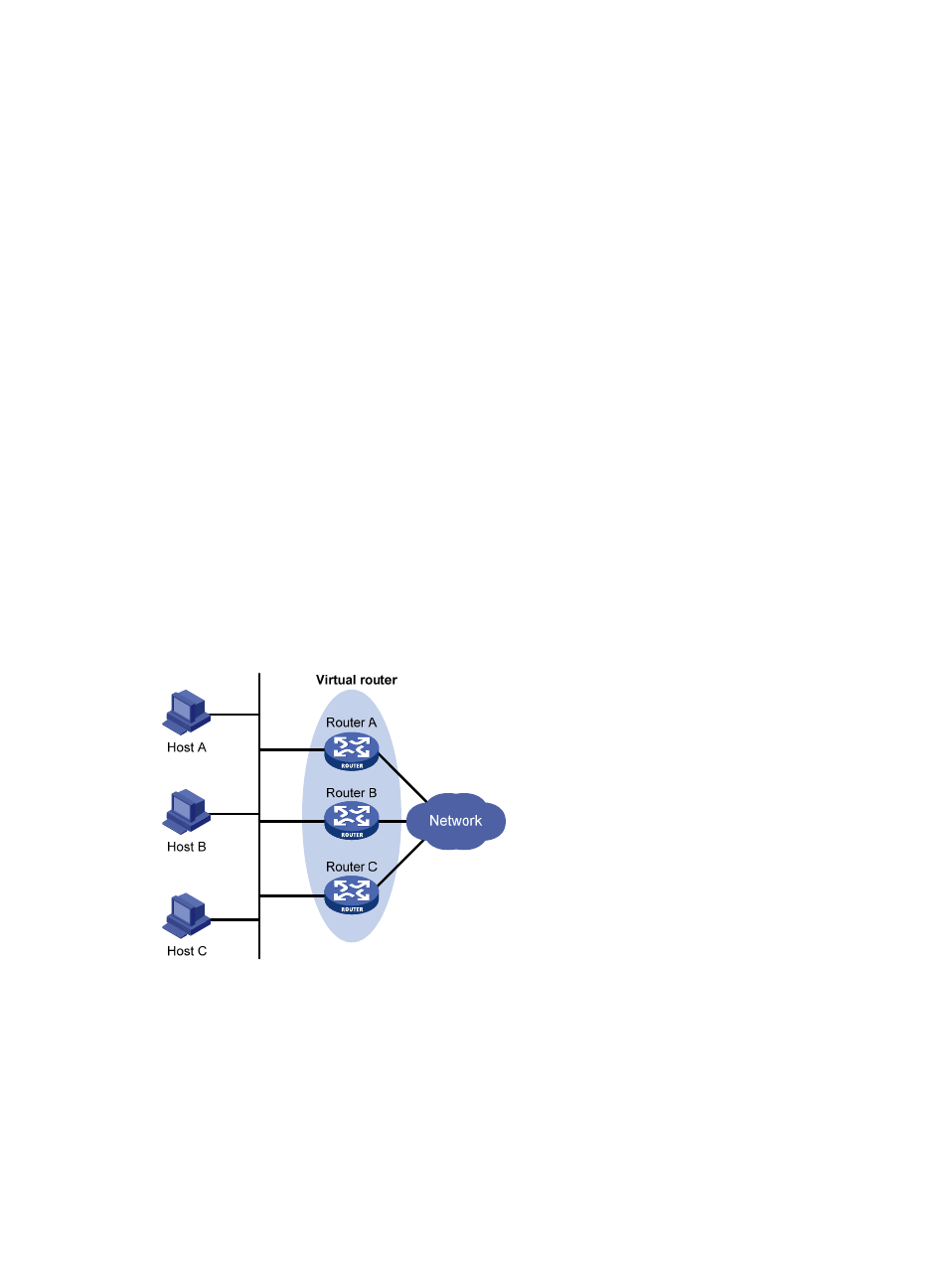Vrrp standard protocol mode, Introduction to vrrp group – H3C Technologies H3C SR8800 User Manual
Page 51

42
VRRP works in either of the following modes:
•
Standard protocol mode—Includes two versions VRRPv2 and VRRPv3 based on RFCs. VRRPv2 is
based on IPv4, and VRRPv3 is based on IPv6. The two versions implement the same functions but
are applied in different network environments. For more information, see
•
Load balancing mode—Extends the standard protocol mode and realizes load balancing. For more
information, see
VRRP standard protocol mode
Introduction to VRRP group
VRRP combines a group of routers (including a master and multiple backups) on a LAN into a virtual
router called VRRP group.
A VRRP group has the following features:
•
A virtual router has a virtual IP address. A host on the LAN only needs to know the IP address of the
virtual router and uses the IP address as the next hop of the default route.
•
Every host on the LAN communicates with external networks through the virtual router.
•
Routers in the VRRP group elect a master that acts as the gateway according to their priorities. The
other routers function as the backups. When the master fails, to make sure that the hosts in the
network segment can uninterruptedly communicate with the external networks, the backups in the
VRRP group elect a new gateway to undertake the responsibility of the failed master.
Figure 11 Network diagram
As shown in
, Router A, Router B, and Router C form a virtual router, which has its own IP address.
Hosts on the Ethernet use the virtual router as the default gateway.
The router with the highest priority among the three routers is elected as the master to act as the gateway,
and the other two are backups.
